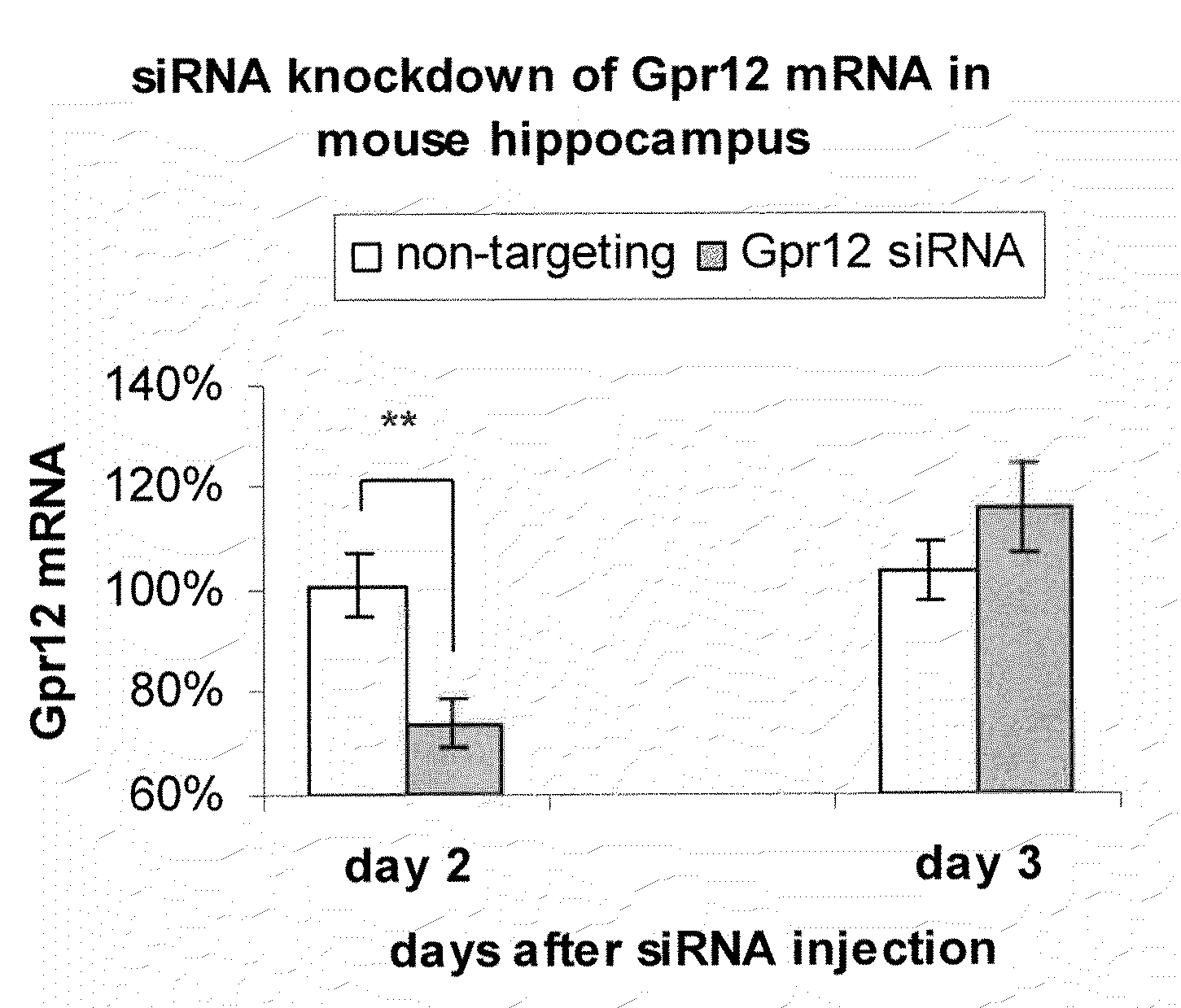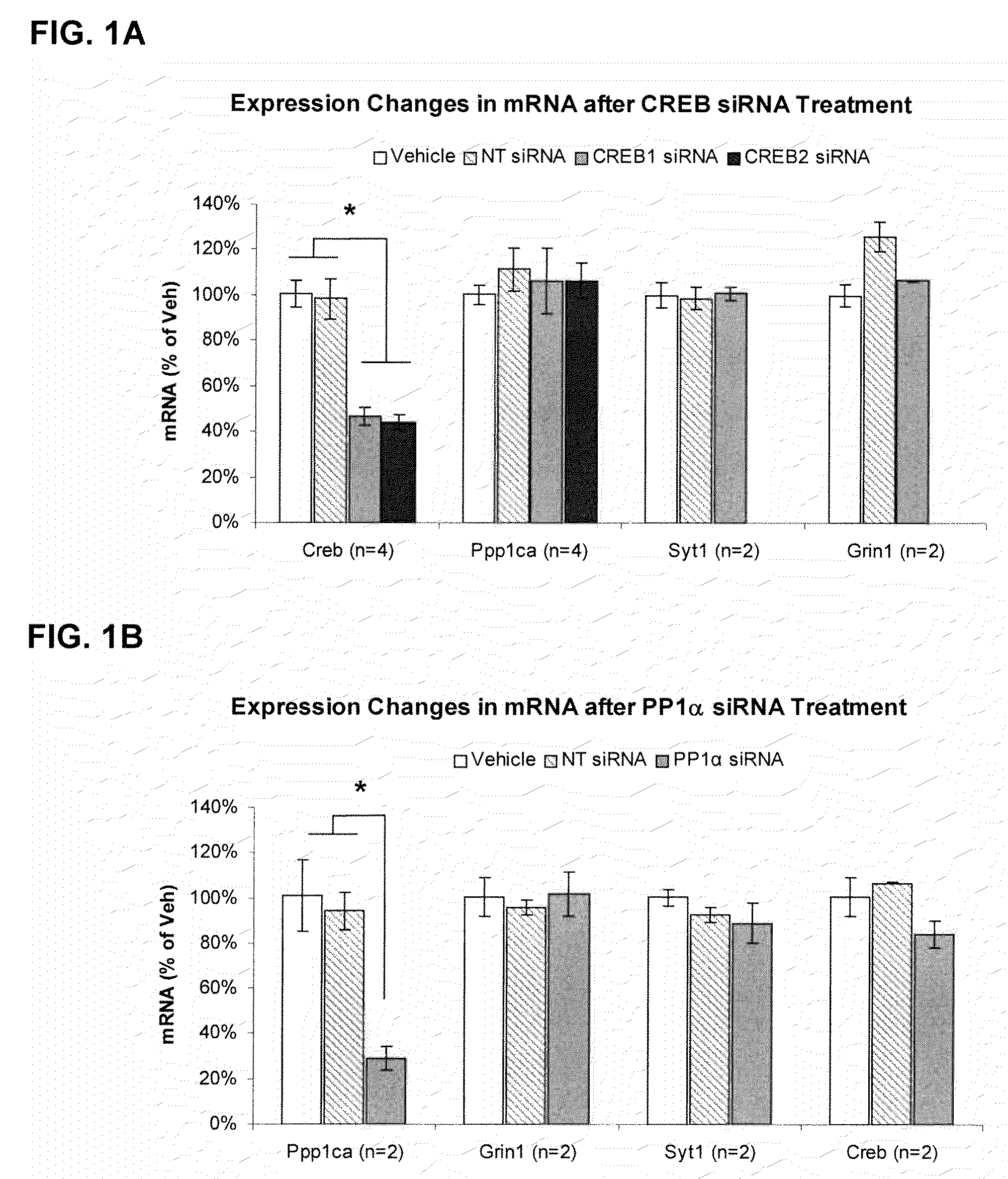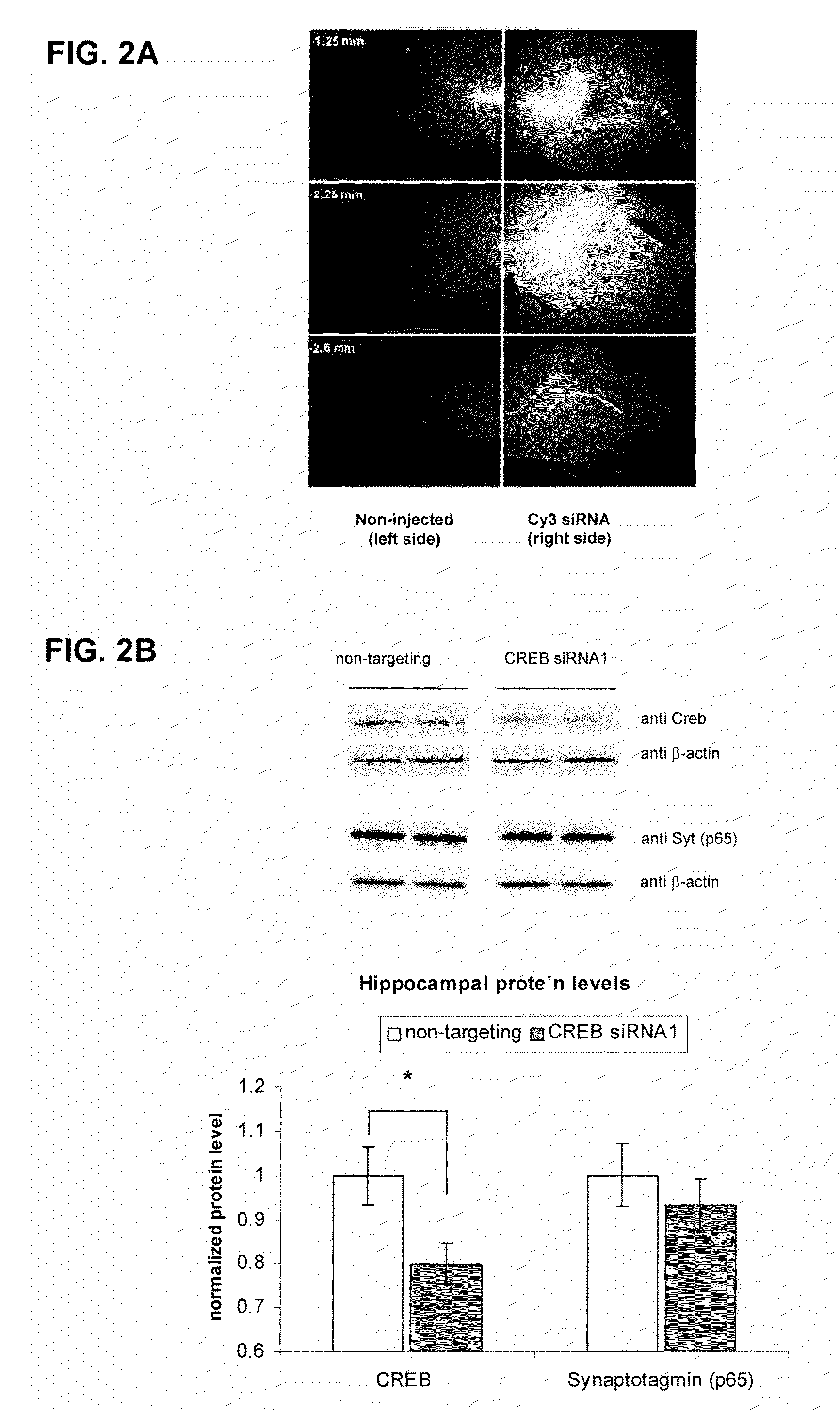METHODS OF IDENTIFYING GENES INVOLVED IN MEMORY FORMATION USING SMALL INTERFERING RNA(siRNA)
a technology of rna and memory, applied in biochemistry apparatus and processes, veterinary instruments, organic active ingredients, etc., can solve the problems of limited in vivo delivery of synthetic sirna to the cns, low efficiency of naked sirna, and inability to demonstrate the specific effect of rnai on memory formation
- Summary
- Abstract
- Description
- Claims
- Application Information
AI Technical Summary
Benefits of technology
Problems solved by technology
Method used
Image
Examples
example 1
Screening for siRNAs Targeting CREB and PPI Using Neuro 2A Cell
[0106]A set of siRNAs targeting CREB and the {acute over (α)}-isoform of PP1 were screened in the Neuro2A mouse neuroblastoma cell line. Several suitable siRNA's that could efficiently target CREB and PP1{acute over (α)} without affecting the mRNA levels of several control genes were identified (FIG. 1).
[0107]In vivo grade siSTABLE siRNA (Dharmacon Inc., Lafayette, USA). siRNA's were chemically modified to enhance stability. A 21mer siSTABLE non-targeting siRNA was used as control (sense strand: 5′-UAGCGACUAAACACAUCAAUU-3′; (SEQ ID NO:1) anti-sense strand: 5′-UUGAUGUGUUUAGUCGCUAUU-3′) (SEQ ID NO:2) (Dharmacon Inc., Lafayette, USA). siRNAs was designed using a multi component rational design algorithm (Reynolds, A. et al. Nat Biotechnol 22, 326-30 (2004)).
[0108]Real-Time PCR. Neuro 2A cells were treated with 100 nM siSTABLE siRNA and Dharmafect 3 carrier (Dharmacon). RNA was isolated using the QIAgen RNeasy kit (Qiagen) a...
example 2
In Vivo Delivery of Synthetic CREB siRNA in Mice
[0115]In vivo delivery of synthetic siRNA in the CNS is hampered by limited diffusion and uptake.
[0116]Subjects. Young-adult (10-12 weeks old) C57BL / 6 male mice were used. Upon arrival, mice were group-housed (5 mice) in standard laboratory cages and maintained on a 12:12 hours light-dark cycle. The experiments were always conducted during the light phase of the cycle. After surgery for hippocampal cannulation, mice were single housed in individual cages and maintained so till the end of the experiment. With the exception of training and testing times, the mice had ad lib access to food and water. Mice were maintained and bred under standard conditions, consistent with National Institutes of Health (NIH) guidelines and approved by the Institutional Animal Care and Use Committee.
[0117]Animal surgery and siRNA injection. For the injection of siRNA, mice were anesthetized with 20 mg / kg Avertin and implanted with a 33-gauge guide cannula b...
example 3
Effect of siRNA Mediated Knockdown of CREB on Contextual and Trace Conditioning
[0125]The effect of siRNA mediated knockdown of CREB on contextual fear conditioning was tested. siRNA targeting a region common to all splice variants of the CREB gene (1114-1132 of NM—009952, corresponding to exon 7 of the CREB gene) was used. Nomenclature according to (Lonze and Ginty, 2002, Neuron, 35:605-623)). Mice were treated with CREB siRNA1 or a non-targeting control siRNA once daily for 3 consecutive days. Behavioral testing was initiated 3 days later (see also FIG. 3b). This design was chosen based on pilot experiments on siRNA knockdown in hippocampus, and because previous studies have indicated that gene-knockdown by siRNA duplexes takes several days to develop in CNS ((Salahpour et al., 2007, Biol. Psychiatry 61:65-69) Tan et al., 2005, Gene Therapy 12:59-66; Thakker et al., 2004, Proc. Natl. Acad. Sci USA 101:17270-17275).
[0126]Contextual conditioning was essentially done as described (Bou...
PUM
| Property | Measurement | Unit |
|---|---|---|
| depth | aaaaa | aaaaa |
| depth | aaaaa | aaaaa |
| percent freezing | aaaaa | aaaaa |
Abstract
Description
Claims
Application Information
 Login to View More
Login to View More - R&D
- Intellectual Property
- Life Sciences
- Materials
- Tech Scout
- Unparalleled Data Quality
- Higher Quality Content
- 60% Fewer Hallucinations
Browse by: Latest US Patents, China's latest patents, Technical Efficacy Thesaurus, Application Domain, Technology Topic, Popular Technical Reports.
© 2025 PatSnap. All rights reserved.Legal|Privacy policy|Modern Slavery Act Transparency Statement|Sitemap|About US| Contact US: help@patsnap.com



